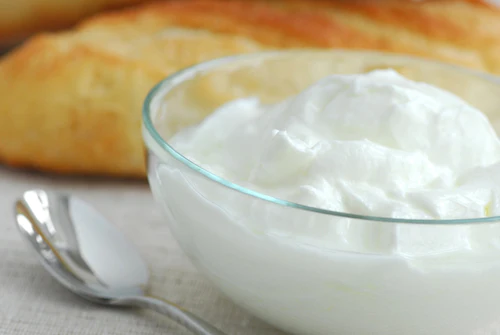Fermenting food is a popular health food trend these days, and we are going to show you how you can make your own yoghurt in just a few steps. Yoghurt is a natural superfood that is packed with probiotics and is excellent for your digestive health. Fermented products have tons of benefits, which science has confirmed. We would say the fermenting revolution is officially upon us.
People have been making yoghurt for thousands of years, when goatherders used to ferment their herd’s milk and save it for later. Yoghurt actually comes from a Turkish word for coagulating and thickening.
This is a practice that has gone throughout all of Iran and India before western lands even heard of it.
You can make Greek yoghurt in a lot of different ways, but this is one of the simpler methods and my favourite one because it doesn’t need any equipment. You don’t even need a yoghurt maker for this recipe.
Here is what you need for this recipe:
- Probiotic yoghurt, to use as your starter
- One litre of milk (full fat is preferable)
- A one-litre mason jar (make sure the jar and its lid have been sterilised)
Directions:
- Place one tbs. of yoghurt into the jar and let it get to room temperature before you add anything else into the jar.
- Cook one litre of milk jest before it reaches boiling point. It should be frothy but not yet bubbling.
- Remove the milk from heat and let it cool to where it doesn’t burn you when you touch it.
- Once the milk has cooled sufficiently, you can add it to the yoghurt and stir as you add. Then tighten your jar’s lid right away.
- Use a few towels to wrap the jar to keep the heat in. Let it set in a warm area for somewhere between six to twelve hours. If it is summertime, then it can sit on a kitchen counter for the entire day.
- For extra thick yoghurt and an authentic Greek yoghurt feel, you can use muslin or a chux cloth to get the whey out.
- This leaves you with tasty, vitamin-rich Greek yoghurt just like grandma used to make it.
Notes:
- Your jar should be resting at about 40 degrees Celsius to ferment properly.
- A lot of store-bought yoghurts have additives, sugar and flavours that you may not want, and you need to be aware of that. The starter you use should be something of high quality that has live cultures. Be sure to look at the ingredient list and make sure it mentions live cultures and few additives.



